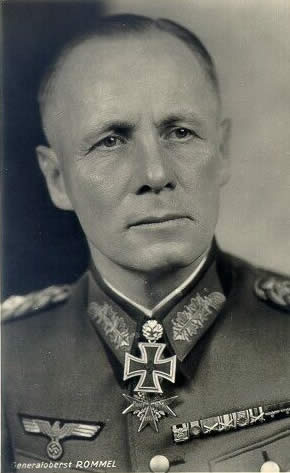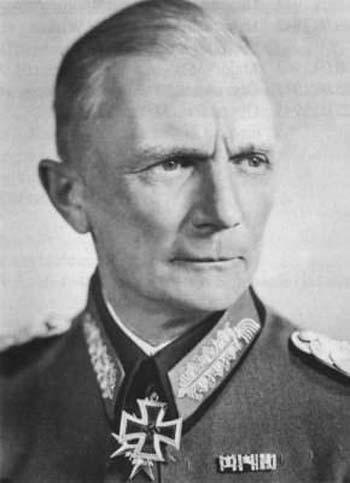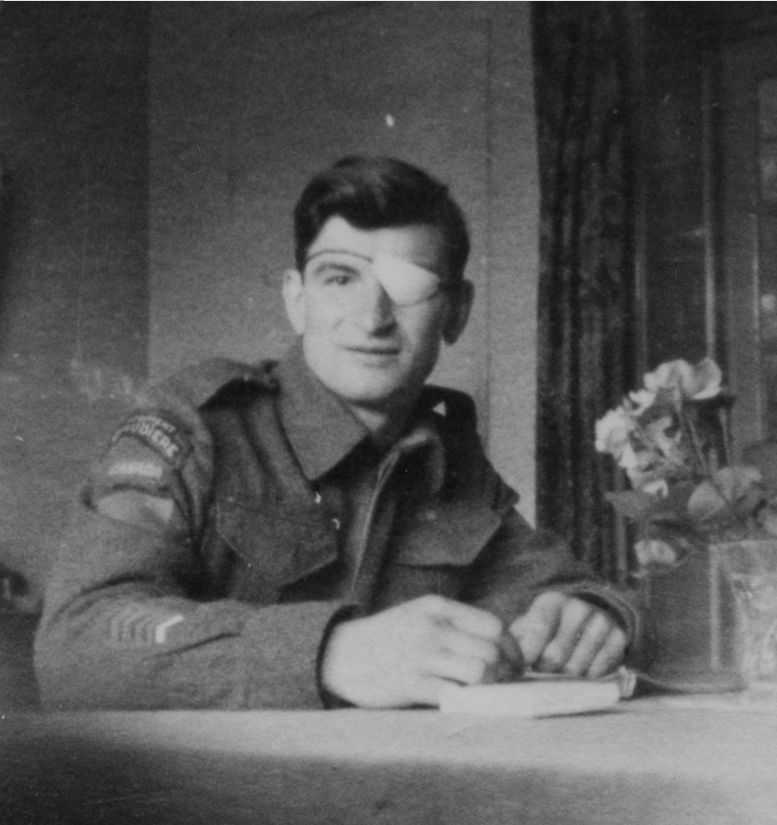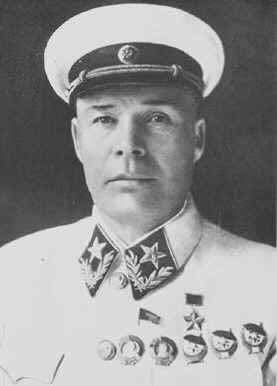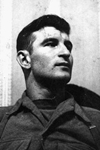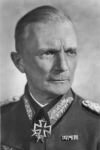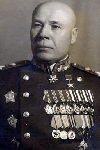Along the Battle Fronts
by Our Military Critic, Maj.-Gen. Sir Charles Gwynn, K.C.B, D.S.O.
The War Illustrated, Volume 6, No. 134, Page 98-99, August 7, 1942.
In the third week of July the general situation had become grave and alarming. Germany's 1942 offensive had developed in even greater strength than was expected. Although it had been evident that during the winter and spring her air power and armour had been husbanded with extreme economy, it was uncertain how far they would be concentrated for the attainment of a single object.
It is now practically certain that she is staking her whole available offensive strength to secure control of the Caucasian oil supplies both for her own use and to deny them to the Red Army.
The crucial question is whether she will be able to maintain the great effort she is making. She has already spent much on preliminary operations, and the tenacity of the Russians at Voronezh has disturbed the even development of her plans.
Communication between the Russian central armies and the lower Volga has been kept open, and consequently the northern flank of the German drive is not secure. On the other hand, the southern wing of the offensive has made rapid progress in the area between the Donetz and the great loop of the Don. Timoshenko's armies here have been forced to retreat southwards, and his troops west of the Donetz in particular may be cut off.
Much must depend on whether Russian forces which have retreated south retain sufficient fighting capacity to exhaust the impetus of the German advance.
It is conceivable that Timoshenko will not attempt to withdraw his troops west of the Donetz, but leave them to fight it out, accepting the risk of encirclement. If the Germans were held up west of the Donetz for a considerable time, their drive east of the river, with lengthened lines of communications, might lose its momentum. The progress of its main bodies show signs of becoming slower. Critical as the situation is for our ally, the enemy must have his anxieties. Having played for high stakes, he cannot afford to lose, and the Russians have given enough evidence of their toughness.
Egypt
In Egypt about the same time the situation was still critical, for although Auchinleck had made a great recovery, there remained an element of uncertainty while Rommel's armour strength remained formidable. Neither side was in a position to take risks: Auchinleck especially so, and his policy of compelling his opponent to expend his resources piecemeal was evidently sound.
During the first week of July the crisis in Egypt reached its peak. It was an anxious question whether Auchinleck would be able to muster sufficient strength to prevent a renewal of Rommel's advance.
By the end of the week it became clear that, temporarily at least, Rommel had shot his bolt. His attempt to rush the defences at El Alamein had been repulsed by the South Africans, and attempts to turn them in the south had been frustrated by mobile columns. But probably the work of the Empire air forces -R.A.F., South African and Australian, was the decisive factor. By maintaining continuous intensive attacks on the enemy's supply columns, airfields and concentrations of troops, and by intervening in actual ground engagements, they accomplished three objectives: they left the enemy short of supplies, especially of water; they gave him no opportunity to rest; and they contributed to his discomfiture when he advanced to attack.
During the second week of the month Rommel was therefore compelled to adopt a defensive attitude, though no doubt with the intention of renewing his offensive as soon as he had received reinforcements, developed his supply organization, repaired damaged armour and given his troops rest. His main infantry formations, chiefly Italian, held the coast road sector; his armour was concentrated behind the centre of his front, while his right, turned sharply back for some 20 miles to protect his communications, was held by mobile detachments and small posts.
If as this time Auchinleck had received sufficient fresh reinforcements, and had had armour in adequate quantity, there would have been an obvious opportunity for a counter-offensive on a major scale against Rommel's tired force. But the Eighth Army was still very exhausted, and reinforcements, especially of armour, were not yet sufficient to justify an attempt which if it failed would have disastrous consequences, and which if it succeeded could not be relentlessly exploited.
Auchinleck did not leave his opponent undisturbed to recover his offensive power. Mobile detachments raided and harried the enemy, and air activity was constantly increased.
On July 10 he made his first move to recover ground by advancing his right about five miles to Tel el Eisa. It is not yet clear whether this was in order to add depth to his position or to forestall an attack. The operation, which had a definitely limited objective, was very successful, 2,000 prisoners, mainly Italian, and some guns being captured and commanding ground occupied.
While this fighting about Tel el Eisa was still in progress, on July 14 Auchinleck stuck again 10 miles farther south, penetrating the Axis positions on the low Ruweisat ridge, which runs for some eight miles parallel to the coast.
Although not a strongly marked feature, the ridge commands a wide view, and Rommel evidently attached importance to it, for he counter-attacked violently. This time he called on his carefully husbanded Panzer divisions, and our own armour intervened to support the infantry in the positions they had captured. A tank battle, which at one time seemed likely to develop into a decisive test of armoured strength, ensued and went on through the 15th and 16th, to be followed by a lull. Both sides had suffered casualties, but neither had a preponderance of strength sufficient to justify taking risks in forcing an issue; and neither had made mistakes in manoeuvre which could not be rectified by evasion.
Rommel had nevertheless been forced to expend much of the reserve supplies he had been attempting to accumulate, and to bring into action reserves of his air force and armour which he had evidently been husbanding for a major operation.
It is clear that the tank battle developed from a comparatively minor operation, and that neither commander had deliberately planned a far-reaching operation. With Alexandria so close behind him, Auchinleck obviously must act cautiously. Rommel, on the other hand, may risk an early decision, for with his long line of communications exposed to air attack he can hardly hope to receive reinforcement on a scale which would compensate for the deterioration of his army due to wastage from attrition and summer conditions in the desert.
If he does not feel strong enough to renew his offensive within a short period it seems probable that he may be compelled to withdraw, possibly to Mersa Matruh, where conditions would be more favourable for building up his strength and where he would be less vulnerable to harassing attacks. The superiority which our air forces have established and their increased range of action, due to the appearance of American heavy bombers, are becoming a vital factor in the situation: for it must affect the rate at which Rommel can receive accessions to his strength and the conditions under which his troops have to live.
Russia
The first three weeks of July saw a grave deterioration in the situation in Russia. The German claim to have captured Voronezh was soon proved to be premature, but by reckless expenditure of life Von Bock by the middle of the month had succeeded in crossing the Don in strength and forming a strong bridgehead that included a footing in the town. And from the neighbourhood of Orel to this point he had established a defensive front which protected his left flank from counterattack by Zhukov's armies.
The intensity in the fighting testified to the importance both sides attached to Voronezh. If the Germans captured it they would secure one of the few placed where a railway crosses the Don and can be used for the maintenance of an army operating east of the river. From Voronezh an army could either strike south, turning the Don defences, or strike east, interrupting the railways which run from the Volga River ports to the Moscow region, while at the same time prolonging the northern defensive flank of the offensive. The Russian counterattacks, which not only denied Voronezh to the enemy but endangered the German troops that had crossed the river, represented therefore a most encouraging success.
Unfortunately, the German drive from the Kharkov region achieved much more that than from the Kursk front. Having crossed the Oskol at Kupiansk it advanced rapidly eastwards to the Don and south-eastwards through the great tract of corn-growing country between the Don and Donetz, which at this season offered a perfect surface for Panzer tactics.
Once the line of the Oskol was lost, there was no other obstacle which could be held till the Don was reached. The Russians therefore retreated, rearguards fighting tenaciously and leaving small centres of resistance which, holding out to the last, delayed the German main bodies. In their advance the Germans overran the very important Moscow-Rostov railway, which had provided the main lateral communication between the northern and southern Russian armies. They made no attempt, however, to cross the Don, but swung southwards, aiming at isolating the whole of Timoshenko's left wing in the Donetz basin and cutting its vital railway communication with Stalingrad. Up to July 22 no attack was made from the west towards Rostov, but the Russians in the Donetz basin were under heavy pressure from the north. Clearly there was a danger that the whole of the rich territory west of the Don would fall into German hands, and Russian troops there, even if they made good their retreat, would lost their main sources of supply. Would they in such circumstances be able to check a German advance into Caucasia or across the Don towards Stalingrad?
The successful resistance at Voronezh should enable reinforcements to reach Stalingrad and the line of the Don in that neighbourhood, but the importance of protecting traffic on the great Volga waterway which carries oil to the north cannot be overestimated. The stand at Voronezh may, therefore, prove a decisive factor in the further development of the situation.
They fight in Egypt
Among the British Regiments of the Eighth Army engaged against Rommel are: The Coldstream Guards, Scots Guards, Royal Northumberland Fusiliers, Rifle Brigade, King's Royal Rifles, the Worcesters, the Cheshires, the Durham Light Infantry, the East Yorkshires, Green Howards, 1st Royal Dragoons, King's Dragoon Guards, 8th and 10th Hussars, 9th and 12th Lancers, the Queen's Bays, City of London Yeomanry, Royal Gloucester Hussars, 3rd, 5th, 7th, 8th, 42nd and 44th Royal Tank Regiments, 3rd and 4th Regiments Royal Horse Artillery, H.A.C. (11th Regt. R.H.A.), Royal Artillery field regiments, light and heavy anti-aircraft regiments. In addition there are troops from the Empire - New Zealanders, Australians, South Africans, and Indians - and the Fighting French.
Previous and next article from The Battle Fronts
Along the Battle Fronts
The period here under review was marked by events of far-reaching importance, although neither side could claim clear cut victory on land. Germany Terrific as their effects were, the four figure r
Along the Battle Fronts
Readers are asked to remember that the articles on the War by Land, Sea and Air, specially written for THE WAR ILLUSTRATED by our expert contributors, should be read with at least a fortnight's perspe
Index
Previous article
Mr. Churchill's third visit to America
Arriving in America on June 18, Mr. Churchill held in Washington a number of conferences with President Roosevelt and the American and British advisers. On his return to London on June 27 a joint sta
Next article
Five Years: China's Great Fight For Freedom
On July 7 China entered upon the sixth year of her heroic resistance to the Japanese invader. The struggle to which the Japanese referred to at first half-contemptuously as an "incident" has develope


